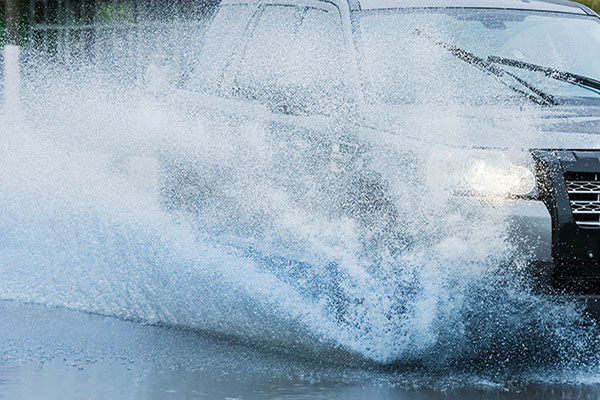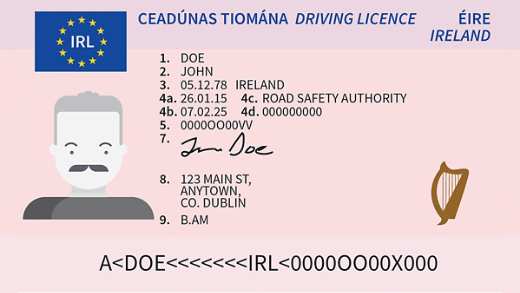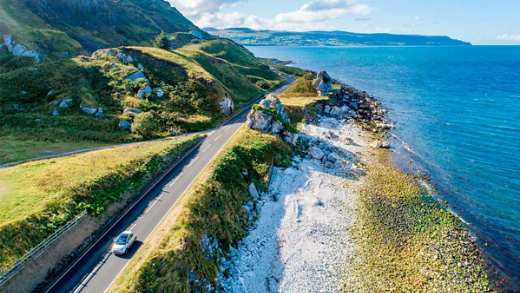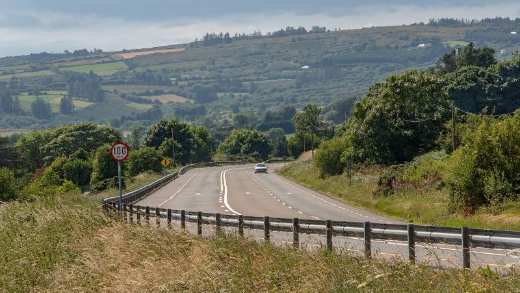Living in Ireland, we’re all well accustomed to rain. Even so, driving in heavy rain or floods can be a tricky task. There are additional things to think about when driving through rain and floods, which can affect your safety. To help keep you safe on the road, we’ve put together some essential tips to help you drive in these conditions.
Remember; don’t drive through water that is deeper than half the diameter of the wheels of your car, and bear in mind that it only takes a few inches of water to damage most vehicles.

How to drive in heavy rain
Reduce Speed
It is vital that you slow down when roads are wet as stopping your vehicle takes longer. Give yourself twice the stopping time you usually would on a dry road.
Excess speed can easily lead to aquaplaning, and no matter how good a driver you are, it is very difficult to manoeuvre your car safely when this happens.
Be Aware of Aquaplaning
Aquaplaning, or hydroplaning, occurs when a layer of water builds up between the surface of a wet road and the tyres of a vehicle. The tyre thread fills with water and is unable to disperse it as usual – as a result it loses grip on the road. This results in you not being able to control steering, braking or accelerating.
We recommend you do not use cruise control when driving in the rain, wet or slippery conditions as it can significantly increase the likelihood, and dangerous effects, of aquaplaning.
In the event that your car begins to aquaplane:
- Try to remain calm
- Don’t slam your foot on the brake
- Ease your foot off the accelerator and hold the steering wheel in the direction of travel, otherwise you could veer and skid into a collision
- If you have cruise control on, switch it off
- When your car feels like it has more grip and control again, you can start to brake to slow yourself down
How to drive through flood water
Always listen to weather forecasts and radio updates before setting out on any journey when flooding is involved. Never drive through flood waters. Some pre-planning could allow you to choose an alternative and safer route.
Be Careful of Bodies of water
If you aren’t sure how deep the water ahead of your car is, do not enter it. Find another route. Don’t risk damaging your car and endangering yourself just to save a few minutes on a shorter route if it is flooded. Do not drive into standing water as there may be deeper potholes or open drains you cannot see - the water can hide any dip in the road.
Reducing your speed will also reduce the likelihood of water entering the engine and consequently cutting it out. Keep the bow-wave of the water in front of your car at all times and use a low gear.
If entering water, do so slowly and at a steady, low speed. When entering water that reaches the level of your wheel rims, be sure to test your brakes once you’re out of the water if it is safe enough to do so.
Stay well clear of moving water. It only takes 30 centimetres of water to make your car float. 60 centimetres of water could easily carry your car away.
Your car and surroundings
If it is safe to do so, try to drive in the middle of the road as the surface tends to be higher there.
If you find yourself behind heavy goods vehicles and trucks, be extremely careful and keep plenty of distance as they generate considerable spray, which will inhibit road visibility.
Always drive with your dipped headlights on to increase your visibility for other drivers.
Keep an eye out for debris and foliage that may be around roads due to harsh weather conditions. These may be concealed under a body of water so you must be vigilant.
To give you peace of mind when driving in rain and floods, be sure you’ve taken out a car insurance policy. At Aviva, we offer different levels of cover comprehensive insurance or third party, fire and theft cover to suit your needs. We also over breakdown assistance in the event you need to be rescued.
















